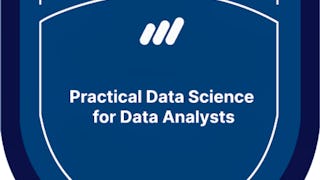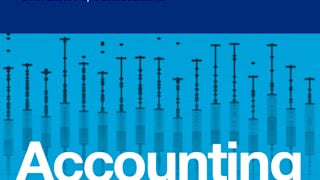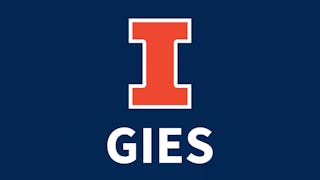This course introduces an overview of financial analytics. You will learn why, when, and how to apply financial analytics in real-world situations. You will explore techniques to analyze time series data and how to evaluate the risk-reward trade off expounded in modern portfolio theory. While most of the focus will be on the prices, returns, and risk of corporate stocks, the analytical techniques can be leverages in other domains. Finally, a short introduction to algorithmic trading concludes the course.

Saving $160 on access to 10,000+ programs is a holiday treat. Save now.


(222 reviews)
What you'll learn
Understand the forecasting process
Describe time series data
Develop an ARIMA Model
Understand a basic trading algorithm
Skills you'll gain
Details to know

Add to your LinkedIn profile
21 assignments
See how employees at top companies are mastering in-demand skills

There are 5 modules in this course
In this course, we will introduce a number of financial analytic techniques. You will learn why, when, and how to apply financial analytics in real-world situations. We will explore techniques to analyze time series data and how to evaluate the risk-reward trade off expounded in modern portfolio theory. While most of the focus will be on the prices, returns, and risks of corporate stocks, the analytical techniques can be leveraged in other domains. Finally, a short introduction to algorithmic trading concludes the course.
What's included
4 videos5 readings1 assignment
In this module, we will introduce an overview of financial analytics. Students will learn why, when, and how to apply financial analytics in real-world situations. We will explore techniques to analyze time series data and how to evaluate the risk-reward trade off expounded in modern portfolio theory. While most of our focus will be on the prices, returns, and risks of corporate stocks, the analytical techniques can be leveraged in other domains. Finally, a short introduction to algorithmic trading concludes the course.
What's included
7 videos2 readings5 assignments1 ungraded lab
We will introduce analytical methods to analyze time series data to build forecasting models and support decision-making. Students will learn how to analyze financial data that is usually presented as time series data. Topics include forecasting performance measures, moving average, exponential smoothing methods, and the Holt-Winters method.
What's included
15 videos2 readings7 assignments1 ungraded lab
In this module, we will begin with stationarity, the first and necessary step in analyzing time series data. Students will learn how to identify if a time series is stationary or not and know how to make nonstationary data become stationary. Next, we will study a basic forecasting model: ARIMA. Students will learn how to build an ARIMA forecasting model using R.
What's included
11 videos2 readings4 assignments1 ungraded lab
We will introduce some basic measurements of modern portfolio theory. Students will understand about risk and returns, how to balance them, and how to evaluate an investment portfolio.
What's included
15 videos4 readings4 assignments1 ungraded lab1 plugin
Instructors


Offered by
Explore more from Leadership and Management
 Status: Free Trial
Status: Free TrialCorporate Finance Institute
 Status: Preview
Status: Preview Status: Free Trial
Status: Free TrialUniversity of Pennsylvania
 Status: Free Trial
Status: Free TrialUniversity of Illinois Urbana-Champaign
Why people choose Coursera for their career




Learner reviews
222 reviews
- 5 stars
65.31%
- 4 stars
23.87%
- 3 stars
3.60%
- 2 stars
4.05%
- 1 star
3.15%
Showing 3 of 222
Reviewed on Jul 20, 2020
A very nice course for beginners and intermediates
Reviewed on Dec 22, 2020
Very nice course. Loved the way of teaching. Thank you so much. Best regards,Enjo
Reviewed on Aug 12, 2020
A very brief and informing course. Learnt a lot in a short period of time

Open new doors with Coursera Plus
Unlimited access to 10,000+ world-class courses, hands-on projects, and job-ready certificate programs - all included in your subscription
Advance your career with an online degree
Earn a degree from world-class universities - 100% online
Join over 3,400 global companies that choose Coursera for Business
Upskill your employees to excel in the digital economy
Frequently asked questions
Once you enroll for a Certificate, you’ll have access to all videos, quizzes, and programming assignments (if applicable). If you choose to explore the course without purchasing, you may not be able to access certain assignments.
You will be eligible for a full refund until 2 weeks after your payment date. You cannot receive a refund once you’ve earned a Course Certificate, even if you complete the course within the 2-week refund period. View our full refund policy.
Yes! Coursera provides financial aid to learners who would like to complete a course but cannot afford the course fee. To apply for aid, select "Learn more and apply" in the Financial Aid section below the "Enroll" button. You'll be prompted to complete a simple application; no other paperwork is required.
More questions
Financial aid available,


